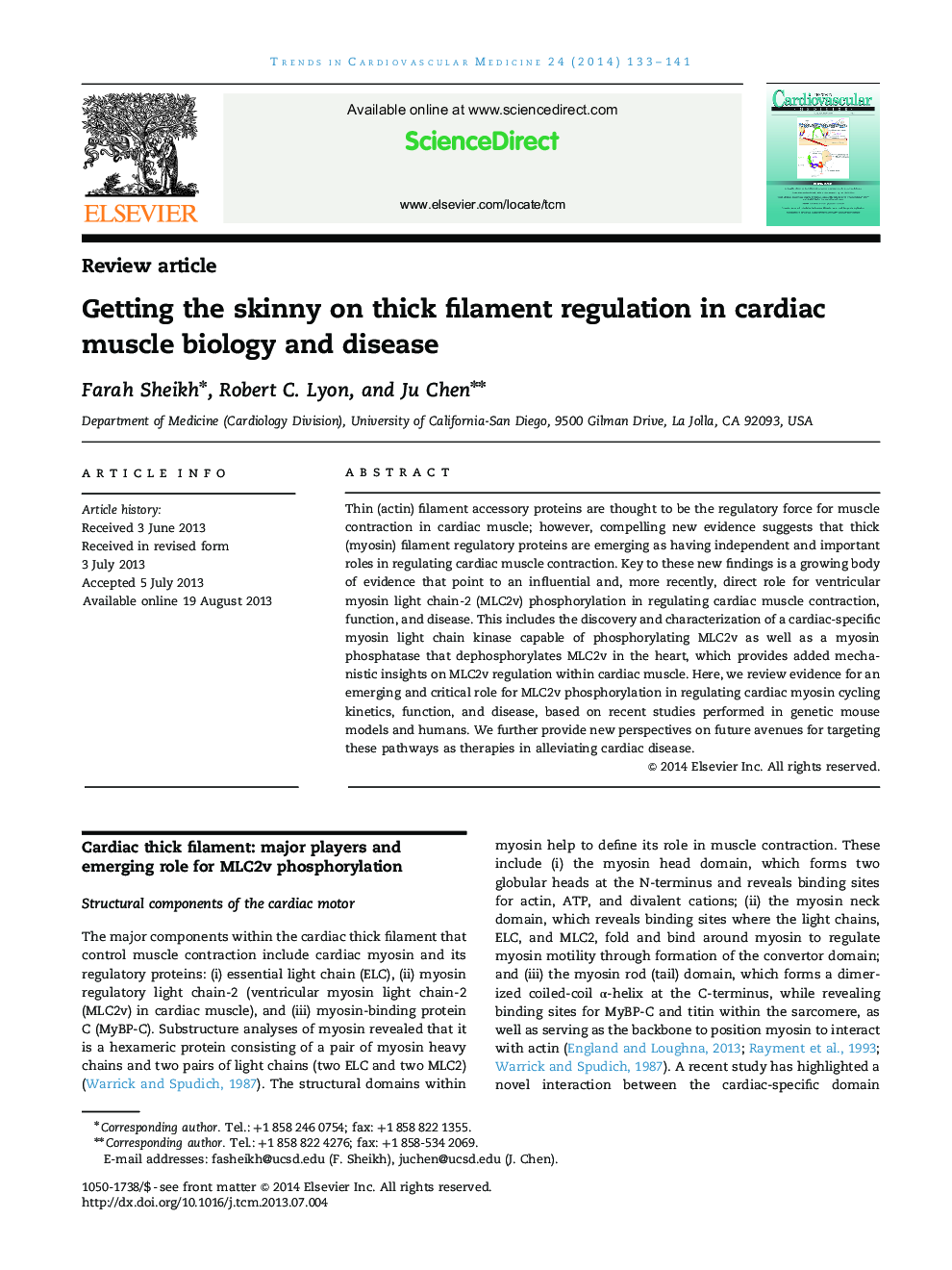| Article ID | Journal | Published Year | Pages | File Type |
|---|---|---|---|---|
| 3030916 | Trends in Cardiovascular Medicine | 2014 | 9 Pages |
Thin (actin) filament accessory proteins are thought to be the regulatory force for muscle contraction in cardiac muscle; however, compelling new evidence suggests that thick (myosin) filament regulatory proteins are emerging as having independent and important roles in regulating cardiac muscle contraction. Key to these new findings is a growing body of evidence that point to an influential and, more recently, direct role for ventricular myosin light chain-2 (MLC2v) phosphorylation in regulating cardiac muscle contraction, function, and disease. This includes the discovery and characterization of a cardiac-specific myosin light chain kinase capable of phosphorylating MLC2v as well as a myosin phosphatase that dephosphorylates MLC2v in the heart, which provides added mechanistic insights on MLC2v regulation within cardiac muscle. Here, we review evidence for an emerging and critical role for MLC2v phosphorylation in regulating cardiac myosin cycling kinetics, function, and disease, based on recent studies performed in genetic mouse models and humans. We further provide new perspectives on future avenues for targeting these pathways as therapies in alleviating cardiac disease.
